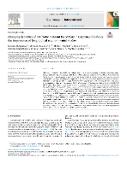Changing dynamics of antibiotic resistant Escherichia in Caspian gulls shows the importance of longitudinal environmental studies

Autor
Nesporova, Kristina
Ruzickova, Michaela
Tarabai, Hassan
Datum vydání
2024Publikováno v
Environment InternationalRočník / Číslo vydání
186 (April)ISBN / ISSN
ISSN: 0160-4120ISBN / ISSN
eISSN: 1873-6750Informace o financování
UK//COOP
Metadata
Zobrazit celý záznamKolekce
Tato publikace má vydavatelskou verzi s DOI 10.1016/j.envint.2024.108606
Abstrakt
This study is focused on Escherichia spp. isolates resistant to critically important antibiotics (cefotaxime, ciprofloxacin and colistin) among Caspian gull's (Larus cachinnans) chicks nesting in the Nove Mlyny Water Reservoir, Czech Republic. The prevalence of antimicrobial resistance (AMR) in bacteria within wild birds is commonly evaluated using a single sampling event, capturing only a brief and momentary snapshot at a particular location. Therefore, the Caspian gulls in our study were sampled in May 2018 (n = 72) and May 2019 (n = 45), and a water sample was taken from the reservoir (2019). We obtained 197 isolates identified as E. coli by MALDI-TOF MS. A total of 158 representative isolates were whole-genome sequenced, 17 isolates were then reclassified to Escherichia albertii. We observed a higher (86 %; 62/72) occurrence of ESBL/AmpC-producing Escherichia spp. among gulls in 2018 compared to 38 % (17/45) in 2019 (p < 0.00001). The decrease in prevalence was linked to clonal lineage of E. coli ST11893 predominating in 2018 which carried blaCMY-2 and which was not recovered from the gulls in 2019. Oppositely, several Escherichia STs were found in gulls from both years as well as in the water sample including STs commonly recognized as internationally high-risk lineages such as ST10, ST58, ST88, ST117, ST648 or ST744. Phylogenetic analysis of E. coli from EnteroBase from countries where these particular gulls wander revealed that some STs are commonly found in various sources including humans and a portion of them is even closely related (up to 100 SNPs) to our isolates. We demonstrated that the occurrence of AMR in Escherichia can vary greatly in time in synanthropic birds and we detected both, a temporary prevalent lineage and several persistent STs. The close relatedness of isolates from gulls and isolates from EnteroBase highlights the need to further evaluate the risk connected to wandering birds.
Klíčová slova
AMR in wild birds, Environmental persistence of AMR bacteria, Successful Escherichia STs
Trvalý odkaz
https://hdl.handle.net/20.500.14178/2779Licence
Licence pro užití plného textu výsledku: Creative Commons Uveďte původ 4.0 International





